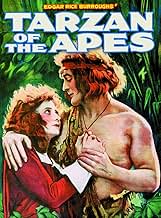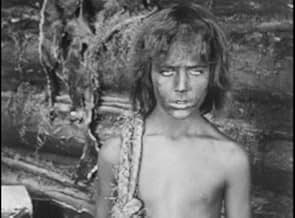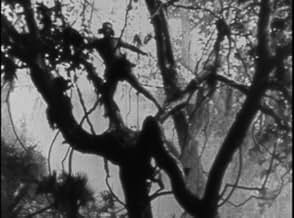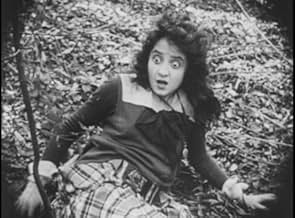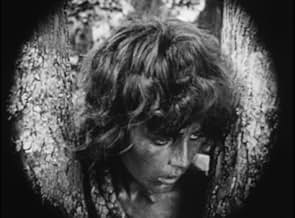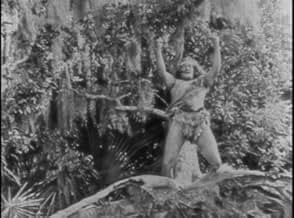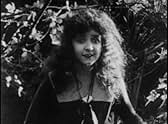Allevato da una scimmia, l'erede dei Greystokes diventa uno delle scimmie. Quindi, il dottor Porter organizza una spedizione di salvataggio e la sua figlia, Jane, cattura la sua attenzione. ... Leggi tuttoAllevato da una scimmia, l'erede dei Greystokes diventa uno delle scimmie. Quindi, il dottor Porter organizza una spedizione di salvataggio e la sua figlia, Jane, cattura la sua attenzione. Tarzan ha trovato il compagno perfetto?Allevato da una scimmia, l'erede dei Greystokes diventa uno delle scimmie. Quindi, il dottor Porter organizza una spedizione di salvataggio e la sua figlia, Jane, cattura la sua attenzione. Tarzan ha trovato il compagno perfetto?
- Regia
- Sceneggiatura
- Star
Madame Sul-Te-Wan
- Esmeralda - Jane's Maid
- (non citato nei titoli originali)
Stellan Windrow
- Tree-Swinging Tarzan
- (non citato nei titoli originali)
Recensioni in evidenza
After a shipboard mutiny forces Lord and Lady Greystoke into the uncharted African Jungle, Lady Greystoke gives birth to a boy. The parents die soon after, and the boy (Gordon Griffith) is raised by a family of "apes". He learns to live and fight like them, but also learns how to read and right from escaped slave Binns (George B. French), who heads back to Europe. Binns eventually convinces enough people that young Greystoke is still alive, and brings an expedition back to find him years later. The boy has now grown into the man known as Tarzan (Elmo Lincoln), Lord of the Jungle. When he sets eyes on Jane Porter (Enid Markey), it's love at first sight, and he rescues her from a number of perils. Also featuring Thomas Jefferson (!).
Filmed in Louisiana, this proved a hit, despite only adapting the first half of Burroughs' novel. A quick sequel, The Romance of Tarzan, was released later the same year but has since been lost. Lincoln, who had played a scary guard in Griffith's Intolerance, makes for an equally scary looking Tarzan, big and beefy, wearing a headband and an over-the-shoulder fur onesie. His Tarzan "yell" consists of him raising his fists in the air and making an insane face. The "apes" in Tarzan's family are people in weird monkey suits, with a real chimp thrown in occasionally to make things even weirder. There's also a really bad gorilla suit, as well as a real lion which one source I have says was actually killed by Lincoln on screen. There's enough strange stuff here to keep the viewer's interest, along with a brief (under an hour) running time.
Filmed in Louisiana, this proved a hit, despite only adapting the first half of Burroughs' novel. A quick sequel, The Romance of Tarzan, was released later the same year but has since been lost. Lincoln, who had played a scary guard in Griffith's Intolerance, makes for an equally scary looking Tarzan, big and beefy, wearing a headband and an over-the-shoulder fur onesie. His Tarzan "yell" consists of him raising his fists in the air and making an insane face. The "apes" in Tarzan's family are people in weird monkey suits, with a real chimp thrown in occasionally to make things even weirder. There's also a really bad gorilla suit, as well as a real lion which one source I have says was actually killed by Lincoln on screen. There's enough strange stuff here to keep the viewer's interest, along with a brief (under an hour) running time.
If someone watches this film and starts looking for shortcomings, they'll probably find a reasonable amount. However, considering the film was made in 1918, it's an amazingly good film--even with its few mistakes and cheesy touches--which, relative to other films of the day, were few.
This original Tarzan film was made in Louisiana. I live in Florida and I could tell by looking at the plants that it was filmed in this part of the USA, but considering that many later Tarzan films were filmed with houseplants all over the set, the backwoods of Louisiana (with all its Spanish moss) was a good choice for a domestic production. As far as the wild animals go, it was a mixed bag. Unfortunately, the elephant was an Asian elephant but I can't blame the film makers too much--the African variety are a lot nastier and dangerous. What I can blame them for, a bit, are the apes that adopt Tarzan. They are clearly people in cheap ape costumes--that look neither like gorillas or chimps--just people in ape costumes! But once again, given the technology of the era, it isn't that bad--plus, Stanley Kubrick did the same thing in "2001" and it's considered a masterpiece!! As for the plot, aside from the addition of a character and a few other small changes, it is essentially Edgar Rice Burroughs' book come to life. It's actually much more accurate than many of the later versions and because it stays closer to the book, it is more interesting and watchable...and less silly. In fact, as far as the writing, direction and acting go, it was all very, very good for such an early full-length film--and a lot better than the gobs of Tarzan films from the 1950s and 60s.
Overall, very good and very interesting.
This original Tarzan film was made in Louisiana. I live in Florida and I could tell by looking at the plants that it was filmed in this part of the USA, but considering that many later Tarzan films were filmed with houseplants all over the set, the backwoods of Louisiana (with all its Spanish moss) was a good choice for a domestic production. As far as the wild animals go, it was a mixed bag. Unfortunately, the elephant was an Asian elephant but I can't blame the film makers too much--the African variety are a lot nastier and dangerous. What I can blame them for, a bit, are the apes that adopt Tarzan. They are clearly people in cheap ape costumes--that look neither like gorillas or chimps--just people in ape costumes! But once again, given the technology of the era, it isn't that bad--plus, Stanley Kubrick did the same thing in "2001" and it's considered a masterpiece!! As for the plot, aside from the addition of a character and a few other small changes, it is essentially Edgar Rice Burroughs' book come to life. It's actually much more accurate than many of the later versions and because it stays closer to the book, it is more interesting and watchable...and less silly. In fact, as far as the writing, direction and acting go, it was all very, very good for such an early full-length film--and a lot better than the gobs of Tarzan films from the 1950s and 60s.
Overall, very good and very interesting.
Cinema's first adaptation of Edgar Rice Burrough's famous novel sees screen strongman Elmo Lincoln claiming a place in cinematic history in the title role. With his bulging eyes and crazed grin, he's a strangely unhinged version of the ape man, but Lincoln's eccentric portrayal somehow makes him all the more convincing. Although only a 60 minute version of the original 2-hour film survives, the plot remains both coherent and remarkably faithful to Burrough's famous novel, and the swamplands of Louisiana provide a convincing substitute for the African jungle.
This original silent version of the Lord of the Apes is perhaps the truest screen representation of the way Tarzan is envisioned in the books by Edgar Rice Burroughs. It is seems very crude but really isn't. It follows the first story (in as much as it can in the limited time of the feature) very closely. Elmo Lincoln, while no Adonis, is very adequate in the role. He's not Johnny Weissmuller...but then Johnny didn't really look all too much like Tarzan should have either.
Shot amongst the luscious vegetation of... Louisiana... this is actually quite a decent effort at telling the story of "Tarzan"; of his family, youth, rescue and - of course - his falling for "Jane" (Enid Markey). It seems to be intercut with archive of some of the animals you might expect to find in the jungle, though some are also clearly folks in costume - but it's over 100 years old, and frankly the narrative flows far better, with a score that conveys the mood well, than the pretty mediocre version told with special effects a plenty in 2016. Gordon Griffith has something of the wonder about him as the child, and Elmo Lincoln the capable, honourable adult. The pace is consistent and the fight scenes quite realistic looking (plenty of gymnastics) - and if you are at all interested in the development of cinema, as well as of this oft told story, then this is well worth 70 minutes of your time. Helpfully, the inter-titles don't get in the way of the acting; they are there - but sparingly.
Lo sapevi?
- QuizEdgar Rice Burroughs sold the film rights for "Tarzan of the Apes" to the National Film Corporation on June 6, 1916. He received a record $5,000 cash advance on royalties, $50,000 in company stock and 5% of gross receipts.
- Versioni alternativeAbridged version released by Hollywood Film Enterprises in 1937 with the title, Tarzan the Boy.
- ConnessioniFeatured in Fractured Flickers: Rose Marie (1963)
I più visti
Accedi per valutare e creare un elenco di titoli salvati per ottenere consigli personalizzati
- How long is Tarzan of the Apes?Powered by Alexa
Dettagli
Botteghino
- Lordo Stati Uniti e Canada
- 3.270.000 USD
- Tempo di esecuzione
- 1h 13min(73 min)
- Mix di suoni
- Proporzioni
- 1.33 : 1
Contribuisci a questa pagina
Suggerisci una modifica o aggiungi i contenuti mancanti

